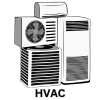The efficiency of an internal combustion engine (ICE), whether diesel, gasoline, or alternative-fuel, depends on a mix of thermodynamic limits, mechanical design, fuel properties, and operating conditions.
In this article:
What is efficiency of an engine?
Engine efficiency refers to how well an engine converts the energy in its fuel into useful mechanical power.
Usually, we break engine efficiency down into several different measures:
- Thermal Efficiency
- Indicated Thermal Efficiency
- Brake Thermal Efficiency
- Volumetric Efficiency
- Mechanical Efficiency
- Overall Engine Efficiency
Factors affecting Efficiency of an engine:
1. Thermodynamic Factors
- Compression ratio: Higher compression generally improves thermal efficiency (diesel has an advantage here), but is limited by fuel knock/detonation.
- Combustion temperature & pressure: Higher peak temperatures improve efficiency but also increase NOx emissions, so there’s a trade-off.
- Air–fuel ratio (AFR): Running closer to lean mixtures (especially in diesel or lean-burn gasoline engines) increases efficiency, but too lean causes misfires.
- Cycle design: Idealized thermodynamic cycles (Otto, Diesel, Atkinson, Miller) each have different theoretical efficiencies.
2. Mechanical & Design Factors
- Friction losses: Piston rings, bearings, valves, and accessories consume energy. Using low-friction coatings and optimized lubrication helps.
- Heat transfer losses: Energy lost to engine walls and cooling systems reduces efficiency. Advanced coatings and thermal barrier materials can minimize this.
- Pumping losses: Work required to move air in and exhaust gases out of the cylinders (significant in throttled gasoline engines). Turbocharging/supercharging can help.
- Engine speed/load: Efficiency is highest near the “sweet spot” of torque and RPM. Light loads or idling waste fuel.
3. Fuel Properties
- Energy density: Diesel has higher energy per liter than gasoline, contributing to higher efficiency in heavy-duty use.
- Octane/Cetane number: Determines resistance to knock (gasoline) or ease of ignition (diesel).
- Alternative fuels: Ethanol, natural gas, hydrogen, or synthetic fuels can influence combustion speed and efficiency.
4. Control & Operation
- Ignition timing & injection strategy: Precise control of when and how fuel burns maximizes efficiency and reduces waste.
- Variable valve timing/lift: Optimizes air intake/exhaust across different speeds and loads.
- Turbocharging & EGR: Improve airflow and reduce emissions while balancing efficiency.
- Hybridization: Allows the engine to run more often in its most efficient operating range.
5. External & Practical Factors
- Load profile: Engines are more efficient under steady, high-load operation (why trucks and ships can reach higher efficiencies than cars in city traffic).
- Maintenance: Dirty injectors, clogged air filters, or worn piston rings all reduce efficiency.
- Ambient conditions: Temperature, altitude, and humidity affect air density and combustion.
Summary:
ICE efficiency is capped by thermodynamic laws (Carnot limit), but real-world values are determined by how well engineers minimize friction, heat, and pumping losses, and how precisely they control combustion.
Other courses:



